Wild steelhead are more than our passion. They are our soul and our inspiration. Powered by persistence and resolve, steelhead undertake an unimaginably arduous migration to sustain life. Littered with roadblocks and seemingly impassable barriers, it is an upstream journey that demands unrelenting perseverance. It is also a pilgrimage that requires difficult changes as steelhead undergo a physiological metamorphosis as they transition between the salt and freshwater.
Like the steelhead’s long, grueling journey back to the river of its birth, the effort to protect and rebuild diminishing wild steelhead populations is replete with countless obstacles and requires determined perseverance. It is also a process that demands tough changes because the status quo is trending toward collapse – a fate that can only be prevented with a transformative approach.
Since its founding in 2001, the Wild Steelhead Coalition (WSC) has tried to embody the dogged determination of our steelhead brethren. We have pushed for the changes needed to conserve and restore wild steelhead stocks, regardless of political expediency and popular opinion. And we have utilized our authentic voices and ability to bridge divides to minimize anglers’ collective impact on wild steelhead populations, especially regarding intentional harvest.
When the WSC was founded, anglers were permitted to harvest 30 wild steelhead a year. Recognizing the need to dramatically curtail harvest, WSC took a leadership role in promoting progressive management and crafted a proposal called “Wild Steelhead Release, Statewide, No Exceptions,” based on their white paper The Biological and Economic Benefits of Wild Steelhead Release.
Years of persistently pushing this policy has resulted in dramatic harvest reduction – from 30 wild steelhead a year per recreational angler to one fish per year on only eight rivers “deemed healthy enough” by the Washington Department of Fish and Wildlife (WDFW). Moreover, WSC championed a successful proposal to eliminate the intentional sport harvest of early run wild steelhead from November 1 through February 15.
Despite implementation of these policies, wild steelhead populations on Washington’s famed Olympic Peninsula (OP) are still slipping toward collapse. On hallowed OP waters such as the Hoh, wild steelhead have failed to meet escapement seven of the last 14 years.
The possibility that one of the Lower 48’s best remaining wild winter steelhead strongholds could soon suffer the same fate as Washington’s five Endangered Species Act-listed steelhead populations is gut wrenching. It is a scenario WSC and other wild steelhead advocates are working tirelessly to avoid.
The cause of this precipitous decline is multifaceted, and as anglers we play a role. Once a sleepy steelhead locale fished primarily by locals, the OP is now a hotspot in the globalized steelhead world. Displaced steelheaders from other devastated steelhead spots in Washington descend on the OP in droves, and people from around the world make the pilgrimage to the Peninsula in search of Oncorhynchus mykiss.

The combination of diminished run sizes and unprecedented angling pressure means these struggling populations are getting hammered. On rivers like the Sol Duc, it is not unusual for catch rates to exceed escapement, meaning the average returning steelhead is caught more than once before it spawns. Making matters worse, anglers’ interactions with steelhead occur when these fish are most vulnerable and closest to fulfilling their spawning mission.
That is why as anglers, we need to look inward and push for conservation-minded changes to sportfishing regulations that minimize our impact and help sustain fledgling populations before it is too late. When wild steelhead disappear, so do anglers’ opportunities to pursue these magnificent fish and by nature the only advocates for the fish. While changing angling habits and techniques is not easy, it sure beats closed rivers and a lost angling opportunity for all. We can “fish through recovery.” We just need to be smart and sensible about how we do it.
For the last three years, WSC has been proactively pushing for these types of prudent, forward thinking regulations. Several WSC members have been participating in the North Coast Steelhead Advisory Group (NCSAG), a diverse ad hoc committee comprised of stakeholders from Forks to Seattle, who were tasked with developing a sensible set of rule proposals. Through a collaborative and consensus based approach, NCSAG has worked to chart the best path forward for both wild steelhead and steelheaders.
After much hard work and persistence, NCSAG developed a suite of simple, common sense, and widely supported proposals. Modeled after successful wild steelhead conservation regulations from Oregon, British Columbia, and other areas, these proposals will help conserve wild steelhead and preserve our angling heritage.
Now, anglers from across the country have the opportunity to support the future of wild steelhead by encouraging WDFW to make the recommended NCSAG’s proposals the law of the land.
We are excited there is an upwelling of support from anglers and other organizations for these proposals. But we understand that change is hard, especially when it comes with increased regulation of our favorite pastime. However, these common sense changes are vital to protect the wild steelhead of the Olympic Peninsula and ensure a future that includes angling opportunities in this legendary corner of our state.
It is time the angling community steps up and demands that the WDFW implement these critical rule proposals.
Learn more about the proposed rules and take action for wild steelhead of the Olympic Peninsula.





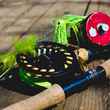


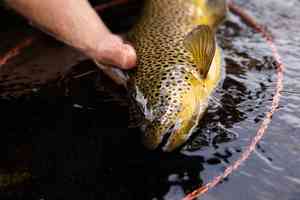


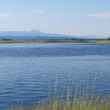



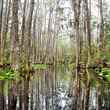




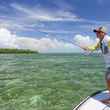




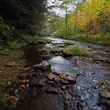
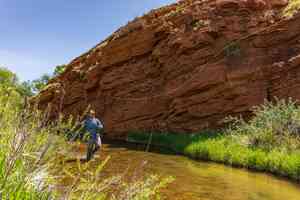


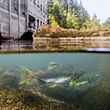

Comments